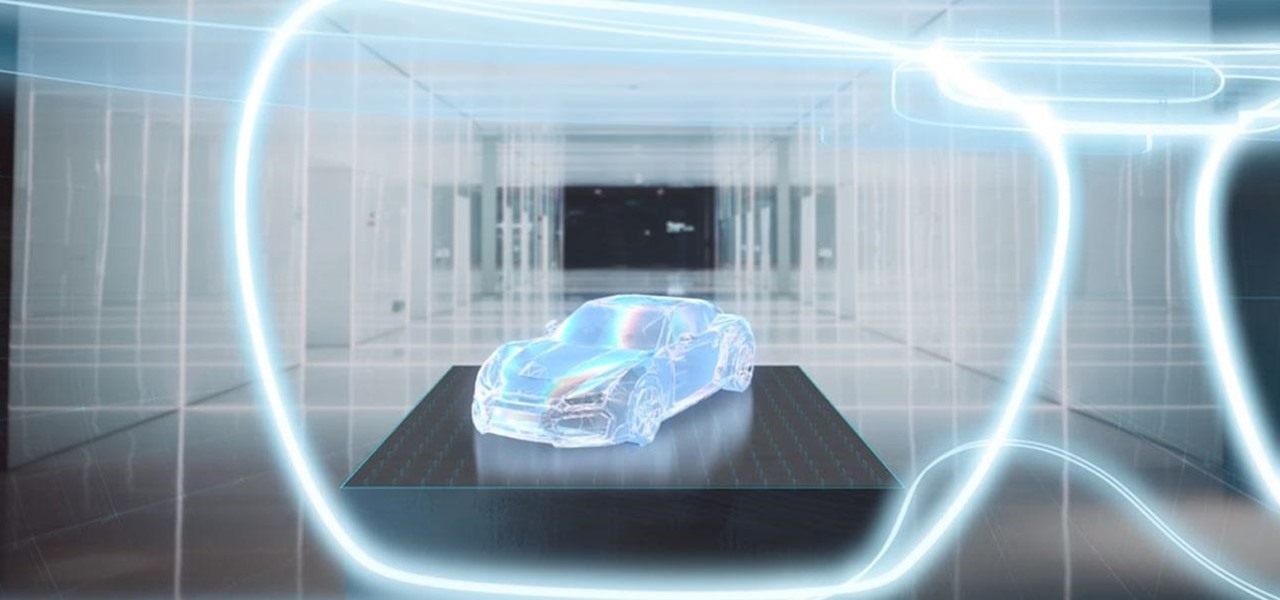As the calendar year (and, for many companies, the fiscal year) comes to a close, it appears 2017 may stand as the new high-water mark for investment in augmented and virtual reality technology.
Last month, the AR/VR advisors at Digi-Capital tallied $2.5 billion in investments in the space, matching the largest 12-month period of investment in under 11 months.
For the last Market Reality of 2017, we're counting down the year's largest investments in companies working on augmented reality technology.
#10 — WaveOptics ($16 Million)
Waveguide display maker WaveOptics saw around $16 million from a Series B round of funding in July. The investment may pay off next year, as the company expects its displays to ship in AR headsets by the end of 2018.
#9 — WayRay ($18 Million)
AR is destined for head-mounted displays, but what about dashboard-mounted displays? In March, WayRay drove home an $18 million Series B round led by Alibaba for its AR navigation technology for automobiles.

#8 — Ultrahaptics ($23 Million)
Current augmented reality experiences are primarily based on sight, but what about the other senses? Ultrahaptics made a business case for augmenting the sense of touch, completing a Series B round of $23 million to fund its entry into AR/VR.

#7 — Perfect Corp ($25 Million)
Makers of a suite of beauty apps powered by AR and AI, Perfect Corp. closed a $25 million Series A round of funding in October. The company's investors appear to be making a wise decision, as augmented reality has already been a boon to the cosmetics industry. In fact, a study commissioned by Perfect Corp. revealed that AR was measurably successful in driving brand engagement and increasing the likelihood of sales conversions.
#6 — Leap Motion ($50 Million)
Standing alongside Unity, Unreal, and Vuforia as the top development tools for AR experiences, Leap Motion closed a Series C round of $50 million in July. The funding will go towards the company's expansion into Asia and application of its technology in the educational, medical, and industrial markets.

#5 — Niantic ($200 Million)
No AR app developer raised more than Niantic. The company closed a Series B round of $200 million in 2017. Of course, it's also worth noting that there's no other AR app that has the name recognition of Pokémon Go, Niantic's breakthrough AR hit of 2016. One property that has a chance of surpassing that title in the public's consciousness is Harry Potter: Wizard's Unite, another Niantic app slated for 2018.
#4 — Corning International ($200 Million)
Apple invested $200 million from its Advanced Manufacturing Fund in Corning International, makers of Gorilla Glass. While its glass is nearly a standard in smartphones, Corning is looking to apply its technology to AR smartglasses as well.

#3 — Finisar ($390 Million)
In December, Apple dipped into its Advanced Manufacturing Fund again to invest $390 million into Finisar, makers of components that power the iPhone X's TrueDepth camera. In the short term, the investment helps boost production capacity. However, Finisar's technology could also find its way into future AR-focused features, such as depth sensors for iPhones or smartglasses.

#2 — Unity ($400 Million)
Silver Lake infused Unity with a $400 million strategic investment in May. Already the leading development environment for augmented and virtual reality content, the investment enables Unity to continue the growth of its AR and VR capabilities.

#1 — Magic Leap ($502 Million)
Just when you thought Magic Leap couldn't persuade investors to fork over even more cash, the company closed a Series D round of $502 million in November. The company has now raised $1.9 billion total (not including CEO Rony Abovitz's own startup funding contributions) and has a listed valuation of $6 billion.

One thing this list makes clear is that investors are putting more resources behind hardware rather than software at this point. In fact, just using the products from the companies represented in this list, one could nearly assemble a fully functional AR headset.
Among software makers, investors supported the companies making the tools that developers will end up relying on to build AR as well as app developers who have already demonstrated measurable success.
Every Friday, Next Reality reviews the latest headlines from the financial side of augmented and mixed reality. This weekly Market Reality column covers funding announcements, mergers and acquisitions, market analysis, and the like. Check out previous editions of Market Reality for more news you may have missed.
Just updated your iPhone? You'll find new features for Podcasts, News, Books, and TV, as well as important security improvements and fresh wallpapers. Find out what's new and changed on your iPhone with the iOS 17.5 update.























Be the First to Comment
Share Your Thoughts